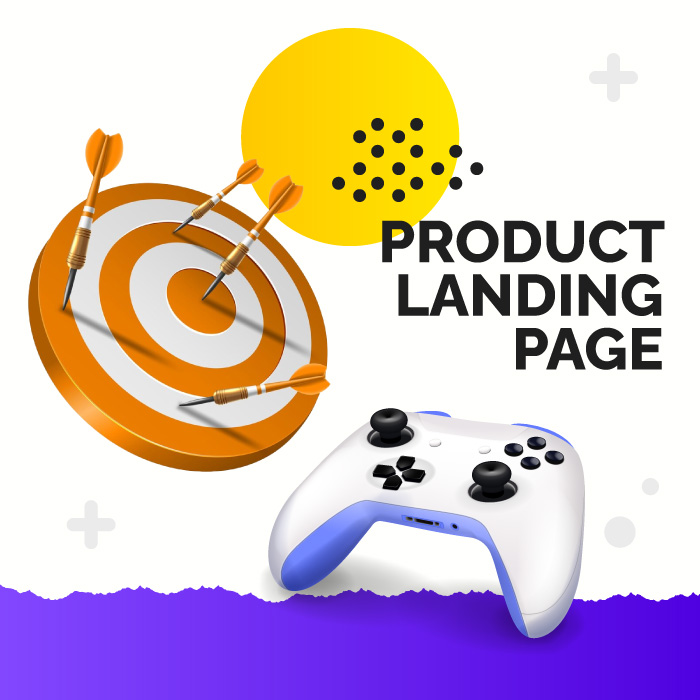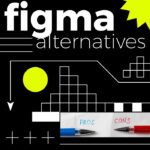
The Amazon marketplace is a vast and intensely competitive arena where millions of sellers vie for consumer attention. Converting a visitor into a buyer on Amazon can be a significant challenge, often limited by the platform’s standardized format. This is where an optimized Amazon landing page becomes a crucial asset for any seller. A dedicated landing page offers a powerful way to boost sales, enhance brand presence, and tell your product’s story beyond the confines of standard Amazon product listings. This post will guide you through effective design principles, essential conversion optimization techniques, and how to seamlessly integrate your landing page with the broader Amazon ecosystem.
Why Your Amazon Business Needs a Dedicated Landing Page
While Amazon provides a robust platform for sales, its rigid structure often limits how you can present your brand and products. A custom Amazon landing page offers unparalleled creative control over messaging, visual branding elements, and the overall user experience. Unlike a standard Amazon product page, your landing page allows you to fully express your brand’s personality, tell a compelling story, and guide visitors through a tailored pre-purchase journey. This level of customization is vital for differentiating your offerings and building a strong brand identity.
Furthermore, a dedicated landing page serves as a vital gateway for external traffic. When running marketing campaigns through social media ads, Google Ads, or email newsletters, directing potential customers straight to an Amazon listing can be jarring and less effective. Instead, sending them to a tailored landing page allows you to pre-qualify and educate them, creating a much warmer lead before linking to Amazon. This strategic approach enhances your product page optimization efforts by ensuring that the traffic reaching Amazon is already highly interested and informed. Beyond aesthetics, custom landing pages can offer better tracking and analytics capabilities outside Amazon’s often-limited data environment. This enriched data helps you understand visitor behavior, optimize your marketing spend, and continually refine your conversion funnels.
Fundamental Principles of High-Converting Landing Page Design
Effective landing page design is the cornerstone of converting visitors into customers. A fundamental principle is clarity and simplicity. Your page should have a clean, uncluttered layout that immediately communicates your product’s value proposition. Visitors should grasp what you offer and why it matters within seconds, without being overwhelmed by excessive information or distractions. Every element on the page should serve a purpose and guide the user towards the desired action.
The ‘above the fold’ impact is critical. This refers to the content visible without scrolling. Your compelling headline, a captivating hero image or video, and your primary call to action (CTA) must all be instantly visible. These elements work together to capture attention, establish relevance, and encourage visitors to explore further. Another key principle is visual hierarchy. Use design elements like color, size, contrast, and negative space strategically to guide the user’s eye. Highlight important information and CTAs so they naturally draw attention, making the conversion path clear and intuitive. Finally, mobile-first responsiveness is non-negotiable. With a significant portion of online shopping occurring on smartphones and tablets, your landing page design must adapt flawlessly to all devices. A poor mobile experience leads to high bounce rates and lost sales, so ensure your page is fully responsive and loads quickly on every screen.
Essential Elements of an Effective Amazon Landing Page
An effective Amazon landing page combines persuasive copy with compelling visuals to drive conversions. It begins with a compelling headline and subheadline. These should be benefit-driven, immediately grabbing attention and clearly articulating your product’s unique selling proposition. Think about the core problem your product solves or the primary desire it fulfills.
High-quality hero visuals are equally important. A stunning hero image or video that vividly showcases the product in use, highlights its primary benefit, or demonstrates its functionality can be incredibly powerful. These visuals instantly communicate value and draw the visitor in. Following this, a clear value proposition must articulate the core benefit and unique selling points of your product. This section answers the visitor’s crucial question: ‘Why should I buy this?’ It differentiates your product from competitors and justifies its price.
The body copy should be benefit-driven, focusing on how the product solves a problem or improves the user’s life, rather than just listing features. Translate features into tangible benefits that resonate with your target audience. A strong Call to Action (CTA) is vital. Design clear, prominent, and action-oriented CTAs (e.g., ‘Shop on Amazon,’ ‘Add to Cart on Amazon’) that stand out visually and use persuasive language. Position them strategically throughout the page, especially above the fold and at the end of key sections. Finally, credibility and social proof are powerful conversion boosters. Effectively integrate customer testimonials, star ratings, positive reviews, trust badges (e.g., secure payment, money-back guarantee), or press mentions to build confidence and reduce perceived risk. This reassures potential buyers that others have had positive experiences with your product and brand.
Optimizing Your Landing Page for Maximum Conversions
Effective product page optimization is an ongoing process that requires data-driven decisions. A/B testing is critical for continuous improvement. Systematically testing different versions of your headlines, images, CTAs, copy, and layouts allows you to identify what resonates best with your audience and drives higher conversion rates. Even minor tweaks can lead to significant gains over time.
Page speed and performance are non-negotiable for retaining visitors and improving user experience. Slow loading times frustrate users, leading to high bounce rates and negatively impacting your conversion potential. Ensure your images are optimized, code is clean, and you use reliable hosting. Subtle and natural keyword integration also plays a role in discoverability. While the primary goal is conversion, weaving relevant product-specific keywords into your landing page copy can enhance its visibility in organic searches without compromising readability. This helps direct more qualified organic traffic to your page.
Finally, understanding buyer intent is crucial for designing a page that converts. You need to know your target audience’s pain points, desired outcomes, and where they are in their purchasing journey. By understanding various types of search intent, you can better match content formats to their needs and guide them effectively towards a purchase decision. Tailoring your message to their specific needs creates a more personal and persuasive experience.
Seamless Integration with the Amazon Ecosystem
Integrating your Amazon landing page effectively with the Amazon ecosystem is key to maximizing sales. Your landing page should act as a powerful pre-qualifier for visitors. Discuss strategies for thoroughly educating and ‘warming up’ potential customers, ensuring that higher quality, more informed traffic is directed to your Amazon listings. This reduces bounces on Amazon and increases the likelihood of a sale.
Strategic Amazon deep linking is a powerful technique. Provide technical and strategic advice on how to link directly to your Amazon product listing, or even to the ‘Add to Cart’ functionality for a streamlined purchase process. In some cases, you can even link to a pre-filled cart. These direct links remove friction and make the path to purchase as smooth as possible for the highly qualified traffic you’ve sent from your landing page. Furthermore, leverage your Amazon Brand Store. Explain how to integrate your Brand Store into your landing page strategy. This offers visitors a deeper dive into your brand’s catalog, showcases your full product line, and builds further trust and brand loyalty before they complete their purchase on Amazon.
Conclusion
Mastering your Amazon sales journey involves more than just listing products; it requires strategic design and relentless optimization. By implementing these powerful strategies for designing and optimizing your Amazon landing page, you can significantly enhance your conversion rates. From crafting compelling narratives and visually stunning layouts to employing rigorous A/B testing and understanding buyer intent, every element plays a vital role. Remember that product page optimization is an ongoing process of testing and adaptation to maintain a competitive advantage. Begin implementing these techniques today to transform your Amazon sales performance and elevate your brand presence.




